Sanskrit Language

 Introduction
IntroductionSanskrit is a classical Indian language. The name Sanskrit means 'refined', 'sacred'and 'sanctified'. Hence, Sanskrit was not thought of as a specific language but as a refined or perfected sacred tongue. It is a language always kept in high esteem and used mostly for religious and scientific discourses in Hinduism, Buddhism and Jainism. The Sanskrit language is supposed to have emerged as early as around 2,000 to 1,000 B.C.E. (Before the Common Era).
It has the credit of being one of the oldest existing languages. Though the origin of the language could not be clearly defined, it is thought to have come from the Indus Valley, the present Pakistan and northwestern India. It has been grouped with the Indo-European languages such as French, German and English, which are considered to share a common ancestor language. In ancient India, knowledge of Sanskrit was a symbol of the elite class and a source for educational attainment. This language is still in use primarily among the educated men, upper class people and religious scholars. It is also one of the 22 official languages of India.
 Sanskrit a vedic language
Sanskrit a vedic language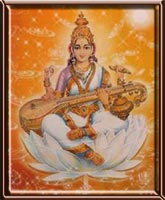 The Vedas, the oldest sacred writings of Hinduism, were written in an early form of Sanskrit, now remains to be called Vedic Sanskrit. Proper pronunciation of the words, in terms of sound and accent, was given much importance to, while chanting the hymns of the Vedas. The Brahmin priests who studied and chanted the hymns were dedicated in preserving the Vedas through oral tradition. This aspect made the Vedas very much sanctified. The last book of the
Rig Veda (tenth in the series) and a considerable part of the Atharva Veda show a later phase of Vedic Sanskrit.
The Vedas, the oldest sacred writings of Hinduism, were written in an early form of Sanskrit, now remains to be called Vedic Sanskrit. Proper pronunciation of the words, in terms of sound and accent, was given much importance to, while chanting the hymns of the Vedas. The Brahmin priests who studied and chanted the hymns were dedicated in preserving the Vedas through oral tradition. This aspect made the Vedas very much sanctified. The last book of the
Rig Veda (tenth in the series) and a considerable part of the Atharva Veda show a later phase of Vedic Sanskrit.However, the later exegetical (explanation of religious text) and philosophical works, the Brahmanas (commentaries on the four Vedas that guides the proper performance of rituals) and the earlier Upanishads (Hindu scriptures that teaches of Vedanta), have preserved considerable relics of the old Vedic language. This vast literature of Vedic exegesis and Vedic philosophy like the Brahmanas, the Aranyakas and the Upanishads, were somehow connected to one or the other of the four Vedas. These works were composed through centuries, and indicate the continuous and gradual evolution of the Vedic Sanskrit into its later phase, called Classical Sanskrit.
The great works in Classical Sanskrit like the Mahabharata, Ramayana, Puranas and other works like the Dharmasastras were the fallout of this revolution. They were considered sacred like Vedic texts. With its expanding literature, Sanskrit had its influence in the formation of most of the cultural and linguistic movements in the following centuries. The later dialects like the Prakrits (Pali and the rest) were taken up by the heterodox sects, the Buddhists and the Jains, and great literary works in these forms were created. According to Tiwari (1955), there were four principal dialects of classical Sanskrit viz.pascimottari, madhyadesi, purvi and daksini.
 Classical Sanskrit
Classical Sanskrit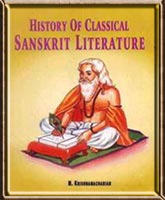 Sometime between the seventh and fourth centuries B.C.E., the grammarian Panini standardized the Sanskrit language that was in a fluid state since then, into a new form, referred to as Classical Sanskrit. This is the Sanskrit that is still in common use. Panini created the great Astadhyaya, a work on Sanskrit grammar containing about 4,000 aphorisms in eight chapters. Astadhyaya sowed the seed to a linguistic revolution and many religious
works, thought provoking Indian poetry and drama, and early scientific and mathematical documents were originally written in Sanskrit.
Sometime between the seventh and fourth centuries B.C.E., the grammarian Panini standardized the Sanskrit language that was in a fluid state since then, into a new form, referred to as Classical Sanskrit. This is the Sanskrit that is still in common use. Panini created the great Astadhyaya, a work on Sanskrit grammar containing about 4,000 aphorisms in eight chapters. Astadhyaya sowed the seed to a linguistic revolution and many religious
works, thought provoking Indian poetry and drama, and early scientific and mathematical documents were originally written in Sanskrit.
 The Efflorescence of Sanskrit
The Efflorescence of SanskritDuring the period of Guptas, ie. from the 4th to the 7th century A.D., Sanskrit attained a boom in creative literature. The Mahabharata that emerged during this period came to be considered as one more addition to the Vedas. The older Puranas, such as the Vayu, Matsya, the Visnu and the Markhandeya, were composed or improved during this period. The Dharma- sastras are the numerous codes of Hindu civil and social law composed by various authors, the most respected being those by Manu and Yajnavalkya. Sanskrit epics and dramas saw their dawn in this period.
Along with the expansion of Indian commerce, Sanskrit spread outside India, in fact all over Asia. Thus Sanskrit became familiar in Central Asia, Tibet, Indo-China and Indonesia. It was also studied in China, Korea and Japan and in about 500-800 A.D. Sanskrit became the great unifying force, source and inspiration of culture among these countries. Even though the Prakrits came into use among the Buddhists and Jains, Sanskrit continued as a medium of Brahmanical religious rituals even in Buddhism and Jainism. It was also established as the language of the elite at the royal courts and the medium of all higher studies in philosophy and science.
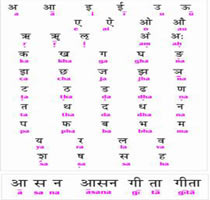 In course of time, Sanskrit absorbed and assimilated many words, terms and expression from regional dialects too and certain phonetic changes and modifications in grammar did take place as in the case of any language. As a result, the dialects Pali and the
Prakrits came into existence during Middle period. Vararuci's Prakrta-prakasa (5th century AD) and Hemchandra's Prakrit grammar (12th century) are two of the most famous Prakrit grammar works. With the passage of time Prakrits were transformed into Apabhramsa dialects and came to be used in literature after 500 AD. It became the medium for folk as well as bardic poetry in Bengal in the east to Saurashtra in the west. Its regional varieties are seen in the rasas in western India and in works such as those of poets like Vidyapati (15th century) in the east. The origin
of the Indo-Aryan languages like Bengali, Gujarati, etc can be traced to Aprabhramsa. The local dialects, called desabhasas came under the influence of Sanskrit which remained the source of their enrichment in literary and verbal application.
In course of time, Sanskrit absorbed and assimilated many words, terms and expression from regional dialects too and certain phonetic changes and modifications in grammar did take place as in the case of any language. As a result, the dialects Pali and the
Prakrits came into existence during Middle period. Vararuci's Prakrta-prakasa (5th century AD) and Hemchandra's Prakrit grammar (12th century) are two of the most famous Prakrit grammar works. With the passage of time Prakrits were transformed into Apabhramsa dialects and came to be used in literature after 500 AD. It became the medium for folk as well as bardic poetry in Bengal in the east to Saurashtra in the west. Its regional varieties are seen in the rasas in western India and in works such as those of poets like Vidyapati (15th century) in the east. The origin
of the Indo-Aryan languages like Bengali, Gujarati, etc can be traced to Aprabhramsa. The local dialects, called desabhasas came under the influence of Sanskrit which remained the source of their enrichment in literary and verbal application.
 Sanskrit& Dravidian Language
Sanskrit& Dravidian Language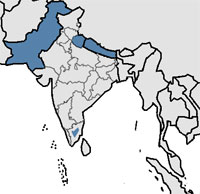 The impact of Sanskrit in South paved way for the development of a devotional literature of supreme quality first in Tamil followed by Telugu and Kannada. The Sangam literature in Tamil had a strong Sanskritic influence from very early days. This led to the creation of different versions of Sanskrit epics like Ramayana and Mahabharata. Many South Indian saints and philosophers such as Adhi Shankara, Ramanuja and Madhva, to mention a few, share the
credit of having directly contributed to the Sanskrit literature. The evidence for the relationship between Sanskrit and the Dravidian languages is seen through many a common vocabulary found between modern day Hindi and the southern languages viz. Tamil, Malayalam, Kannada and Telugu.
The impact of Sanskrit in South paved way for the development of a devotional literature of supreme quality first in Tamil followed by Telugu and Kannada. The Sangam literature in Tamil had a strong Sanskritic influence from very early days. This led to the creation of different versions of Sanskrit epics like Ramayana and Mahabharata. Many South Indian saints and philosophers such as Adhi Shankara, Ramanuja and Madhva, to mention a few, share the
credit of having directly contributed to the Sanskrit literature. The evidence for the relationship between Sanskrit and the Dravidian languages is seen through many a common vocabulary found between modern day Hindi and the southern languages viz. Tamil, Malayalam, Kannada and Telugu.
 The Modern Renaissance
The Modern Renaissance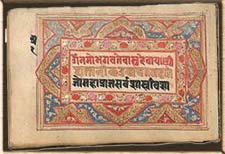 Even in 1857, the three universities established by the British in India adopted English as the medium of instruction. However, they had prescribed the languages, Sanskrit, Arabic and Persian (as classical languages) besides Greek and Latin and students were required to take one of these languages as a compulsory subject. Bengal was the forerunner in India in the study of English language. However this cult very quickly spread to other parts of India. The study of English literature amongst the educated led to the modern literary renaissance. As a result the literature of India was enriched with the heritage of Sanskrit and expressions of English. Raja Rammohan Roy adopted a highly Sanskritized style in his Bengali writings. Iswar Chandra Vidyasagar and, after him, Michael Madhusudan Dutt, Bankim Chandra Chatterjee and Rabindranath Tagore were some of the prominent and renowned Bengali writers.
Even in 1857, the three universities established by the British in India adopted English as the medium of instruction. However, they had prescribed the languages, Sanskrit, Arabic and Persian (as classical languages) besides Greek and Latin and students were required to take one of these languages as a compulsory subject. Bengal was the forerunner in India in the study of English language. However this cult very quickly spread to other parts of India. The study of English literature amongst the educated led to the modern literary renaissance. As a result the literature of India was enriched with the heritage of Sanskrit and expressions of English. Raja Rammohan Roy adopted a highly Sanskritized style in his Bengali writings. Iswar Chandra Vidyasagar and, after him, Michael Madhusudan Dutt, Bankim Chandra Chatterjee and Rabindranath Tagore were some of the prominent and renowned Bengali writers.
Modern Hindi, during the last one hundred years, had acquired great expressiveness by borrowing the vocabulary and other resources of Sanskrit. Bharatendu Harishchandra of Kashi (1850-1883) was the first great writer in modern Hindi and he was the one who gave a definition to modern literary Hindi through his writings. Sanskrit also had its influence over the literature of the other great Indian languages like Gujarati, Marathi, Telugu, etc.
Today Sanskrit is used mainly in Hindu religious rituals as a ceremonial language for reciting hymns and mantras. However, efforts are going on to revive Sanskrit as an everyday spoken language in a place near Shimoga in Karnataka. There are many devoted Sanskrit scholars who speak Sanskrit as a second language. Sanskrit is studied by many Indians as a source of knowledge as Sanskrit plays an important role in the study of Vedas, Brahmanas, Upanishads, Puranas and several epic literatures like Ramayana and Mahabharatha. Sanskrit is taught in India right from the school level to the University level through various National Institutes of Sanskrit as well as Sanskrit Universities.


